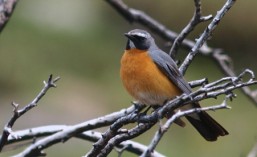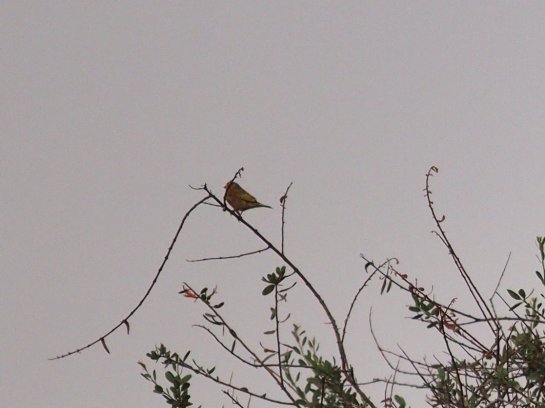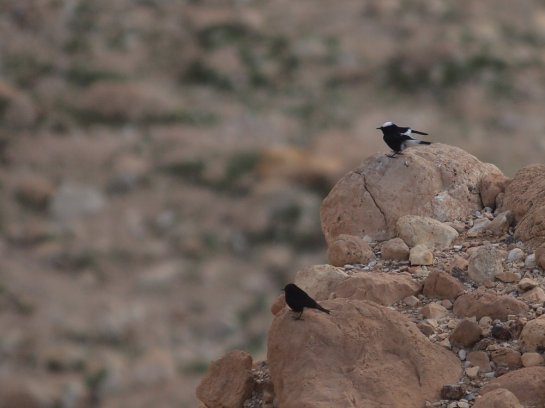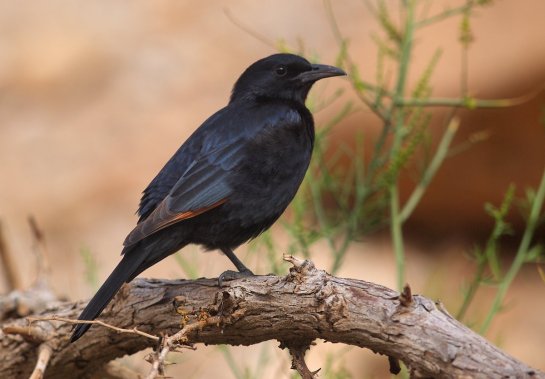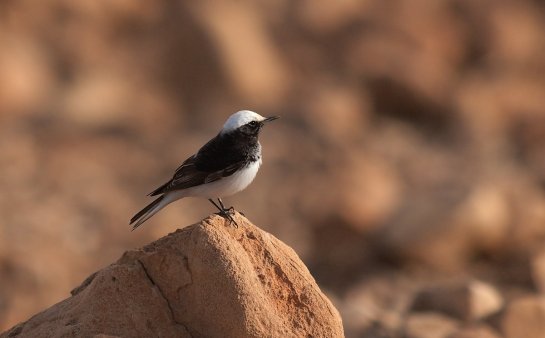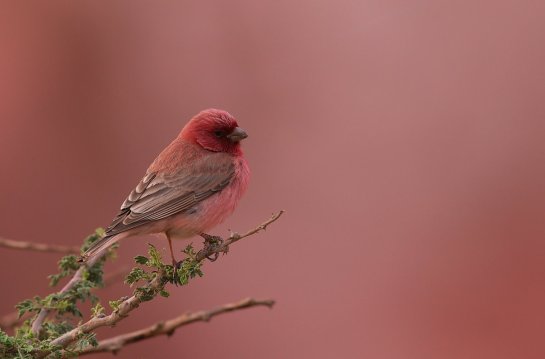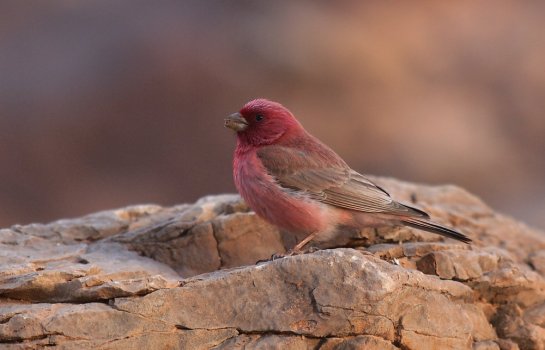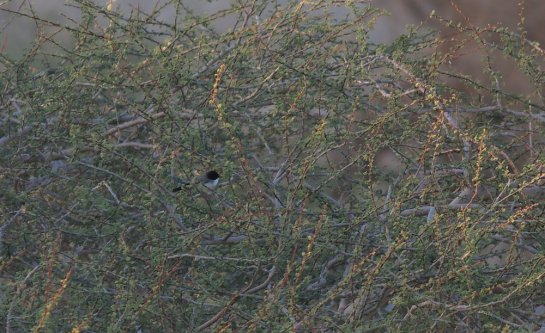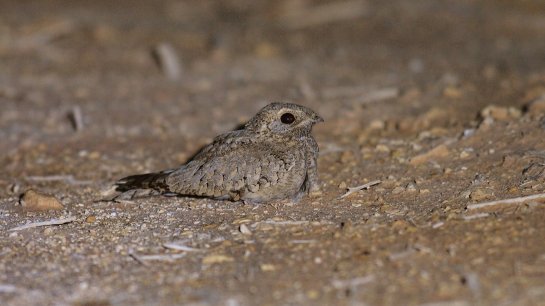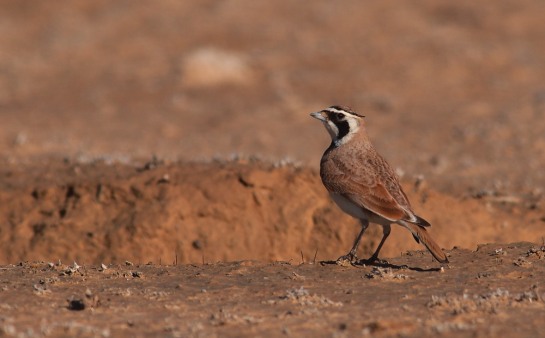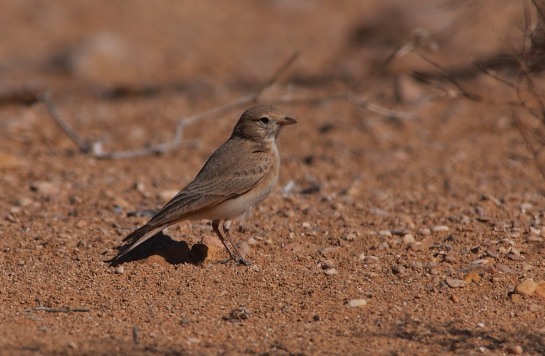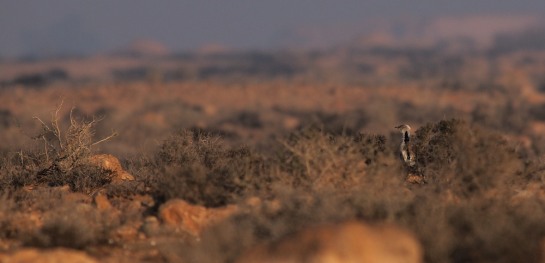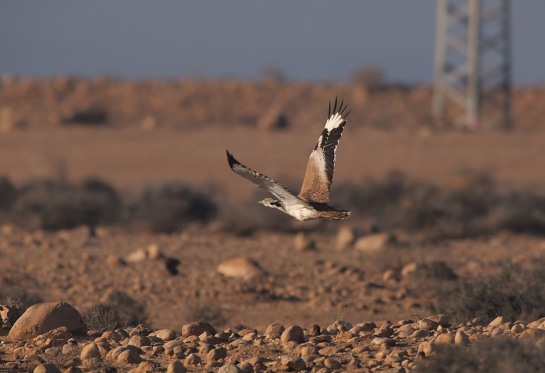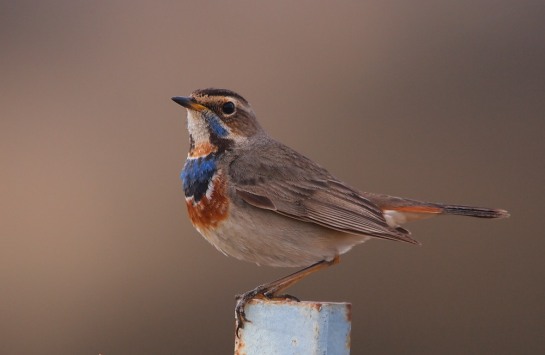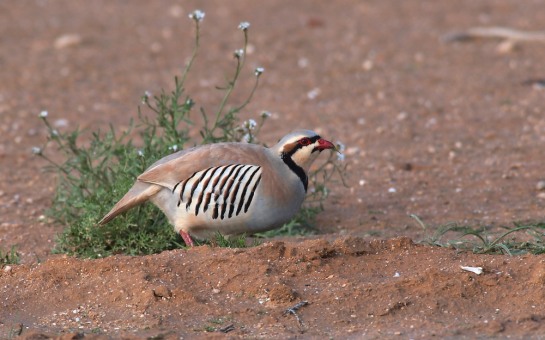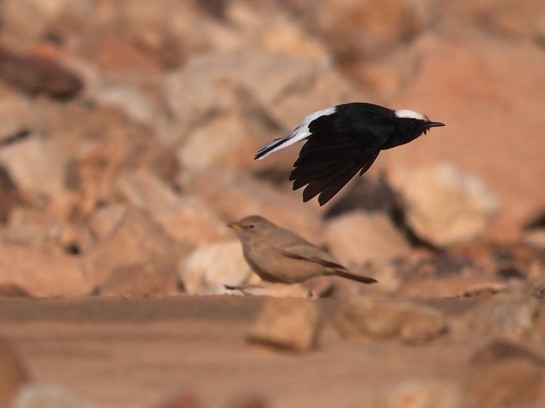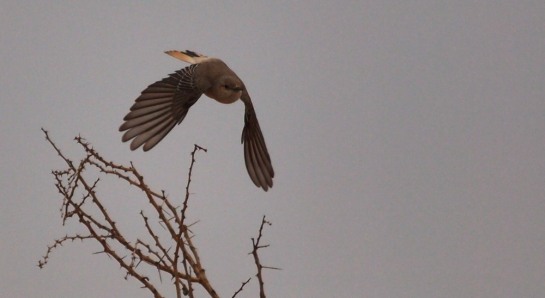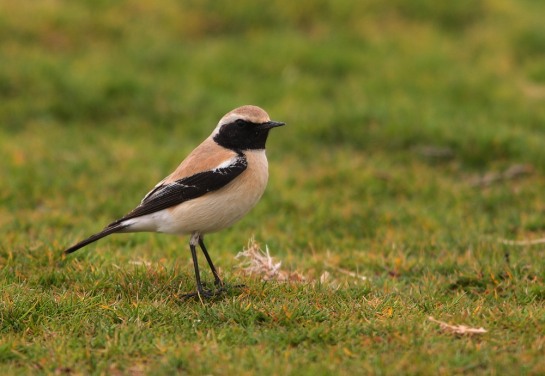
Desert Finch
After the Hume’s Owl experience we stayed one more night with Oded in Neot HaKikkare. After a good nights sleep we went birding in the Hatzeva area. We checked the Syrian Serins again and this time the birds gave much better views in perfect sunlight. Compared to yesterdays poor views it was almost like getting it as a lifer again.

Syrian Serin

Syrian Serins
Oded has made studies of both Southern Grey Shrike and Arabian Babblers behavior. So some birds around Hatzeva have become rather tame. For instance a Blackstart has been fed with worms every now and then. So Oded gave us some worms and we went to the Blackstart-place. And we soon located the bird – and when it found out that we had worms it went crazy walking less than a meter away from us. Truly stunning!
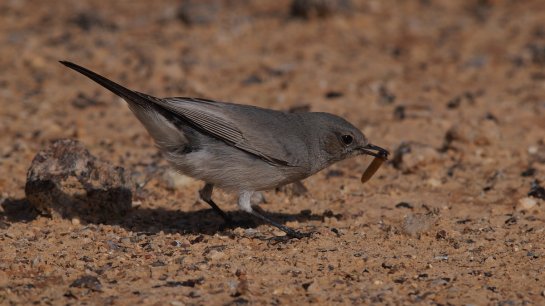
Blackstart
After finishing birding in Hatzeva we went to the Judean Desert in order to see the Striolated Bunting, but again we didn’t have any luck. The only addition to the trip-list was a Berbery Falcon.

Short-toed Snake-eagles
Yoav had invited us to dinner before flying back to Turkey very early in the morning. On the way to Yoav we passed Lahav, where Emin saw Long-billed Pipit on our first day of birding. So we checked in once again. The first birds we noted were two Short-toed Snake-Eagles, that were hunting in the hills. After enjoying them for a while I started walking in the are and soon I got confused as I thought I heard the Long-billed Pipits, but their calls were mixed with Crested Larks and Skylarks. I went to check the sound and suddenly I flushed two Crested Larks, one Skylark and two LONG-BILLED PIPITS. Yes, finally I managed to see them. They are not exactly shy birds, so I managed to get a few pictures, even though they’re nothing to brag about.

Long-billed Pipit

Long-billed Pipit
After Lahav we went to Yoav, where we spent the evening in the company of him, his wife and their two boys. And at 01:00 we headed towards the airport – a very good birding trip to Israel had come to an end. Surely I’ll be back to this wonderful country.

Short-toed Snake-eagle
At last I really wish to say thanks to Shachar Altenman, Amir ben Dov, Yoav Perlman, Jonathan Meyrav, Hadoram Shirihai, Itai Shanni and Oded Keynan for all their help with planning and carrying thou this trip.
We managed to see 159 different species on the trip (Emin flew a little later so he managed to add a few more species like Olive-backed Pipit and Monk Parakeet in Tev-Aviv). The species can be seen below:
1 Shelduck
2 Mallard
3 Pintail
4 Gadwall
5 Shoveler
6 Teal
7 Common Pochard
8 White-headed Duck
9 Chukar
10 Sand Partridge
11 Black-necked Grebe
12 Little Grebe
13 Yelkovan Shearwater
14 White Pelican
15 Great Cormorant
16 Nightheron
17 Straited Heron
18 Cattle Egret
19 Squacco Heron
20 Little Egret
21 Western Reef Egret
22 Great White Egret
23 Grey Heron
24 White Stork
25 Spoonbill
26 Greater Flamingo
27 Griffon Vulture
28 Osprey
29 Imperial Eagle
30 Great Spotted Eagle
31 Steppe Eagle
32 Short-toed Snake-eagle
33 Black Kite
34 Marsh Harrier
35 Pallid Herrier
36 Hen Harrier
37 Long-legged Buzzard
38 Common Buzzard (+ vulpinus)
39 Sparrowhawk
40 Kestrel
41 Berbery Falcon
42 Moorhen
43 Coot
44 Crane
45 MacQueens Bustard
46 Avocet
47 Black-winged Stilt
48 Stone Curlew
49 Ringed Plover
50 Little Ringed Plover
51 Northern Lapwing
52 Spur-winged Lapwing
53 Dunlins
54 Little Stint
55 Green Sandpiper
56 Common Sandpiper
57 Redshank
58 Greenshank
59 Curlew
60 Common Snipe
61 Arctic Skua
62 Black-headed Gull
63 Slender-billed Gull
64 Mediterrian Gull
64 Yellow-legged Gull
65 Armenian Gull
66 Palla’s Gull
67 Lesser Black-backed Gull (+Heuglini)
68 Little Gull
69 White-eyed Gull
70 Sandwich Tern
71 Black Tern
72 Whiskered Tern
73 Spotted Sandgrouse
74 Crowned Sandgrouse
75 Rock Dove
76 Collared Dove
77 Laughing Dove
78 Great Spotted Cuckoo
79 Pharaoe Eagle-owl
80 Hume’s Owl
81 Little Owl
82 Egyptian Nightjar
83 Nubian Nightjar
84 Common Swift
85 Pallied Swift
86 Alpine Swift
87 Hoopoe
88 Common Kingfisher
89 Pied Kingfisher
90 Little Green Bee-eater
91 Syrian Woodpecker
92 Skylark
93 Crested Lark
94 Short-toed Lark
95 Desert Lark
96 Bar-tailed Lark
97 Temminck’s Lark
98 Rock Martin
99 Barn Swallow
100 House Martin
101 Long-billed Pipit
102 Water Pipit
103 Meadow Pipit
104 Red-throated Pipit
105 White Wagtail
106 Yellow Wagtail
107 Grey Wagtail
108 Robin
109 Bluethroat
110 Redstart
111 Black Redstart
112 Isabelline Wheatear
113 Finche’s Wheatear
114 Mourning Wheatear
115 Hooded Wheatear
116 White-crowned Wheatear
117 Blackstart
118 Desert Wheatear
119 Stonechat
120 Sibirian Stonechat
121 Blackbird
122 Scrub Warbler
123 Graceful Prinia
124 Lesser White-throat
125 Arabian Warbler
126 Sardinian Warbler
127 Cyprus Warbler
128 Speckteled Warbler
129 Asian Desert Warbler
130 Reed Warbler
131 Chiffchaff
132 Great Tit
133 Southern Grey Shrike
134 White-speckled Bulbul
135 Palestine Sunbird
136 Arabian Babbler
137 Jay
138 Jackdove
139 Rook
140 Hooded Crow
141 Brown-necked Raven
142 Fan-tailed Raven
143 House Crow
144 Tristam’s starling
145 Starling
146 House Sparrow
147 Spanish Sparrow
148 Chafffinch
149 Linnet
150 Goldfinch
151 Greenfinch
152 Serin
153 Syrian Serin
154 Sinai Rosefinch
155 Trumpeter Finch
156 Desert Finch
157 Reed Bunting
158 Corn Bunting
159 Striolated Bunting
62.236025
-6.591915
